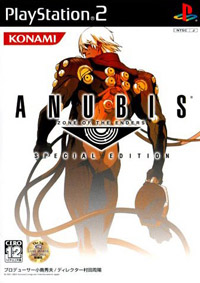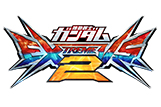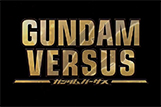Reviews: Anubis Special Edition (7/10)
Posted on : 11-12-2012 | By : Cacophanus | In : Reviews
Hardware: PlayStation 2
2
 When we reviewed the original Anubis back in 2003, the (Japanese) version we covered was not the same game that was released abroad. Mainly because there were multiple silent revisions across various territories, with Europe seemingly getting the more polished versions. Of all these numerous releases, the final one was something we also played to see if anything functionally noteworthy had happened.
When we reviewed the original Anubis back in 2003, the (Japanese) version we covered was not the same game that was released abroad. Mainly because there were multiple silent revisions across various territories, with Europe seemingly getting the more polished versions. Of all these numerous releases, the final one was something we also played to see if anything functionally noteworthy had happened.
In short, the Special Edition made lots of little changes and one pretty big one. From much welcomed boss balancing tweaks to an all new enemy squad set-up, not to mention a veritable legion of fixes to small but suitably annoying issues. All of these were undeniably positive improvements and almost made the final game something tantalisingly coherent. To the point that it made the game more of what it should have been in the first place.
If we’re honest, we do appreciate a lot of the anime references in Anubis. Especially as the bulk of it was Layzner based, with Kazuhiko Inoue (the seiyuu for Eiji) voicing Dingo as a lone pilot in a mecha with a monotonic AI that likes to glow bright blue (and not forgetting to mention that it was set on Mars). So when we played the original game, we were pretty disappointed that so many functional issues mired all the rather cool reference material.
Much like the original version, the Special Edition had an almost identical mission structure and an excessive amount of narrative (which in the European release was awfully dubbed into English). So to buy the Special Edition meant that you were after something more functionally polished.
The main flaw of the ZOE games has always been the fact that the two ranges of combat had no real functional linkage. Ranged and melee combat operated separately, with the distance between the two being a functional wasteland. Unlike Virtual On, where fixed vectored dashes married the two combat systems, the ZOE games had a simple and pretty analogue dash function. It was basically a straightforward “go here” mechanic and it made the two combat systems feel very separate, as well as being somewhat irritating that you had to slowly travel to each encounter.
This was something the development team were keenly aware of. Not only did it birth the Zero Shift function, a pretty crude solution that bridged the gap between the ranges by teleporting the player straight into close combat, but also the new enemy squad AI set-up seen in the Special Edition. It was this squad enemy set-up that almost made ZOE’s analogue dash work.
To clarify, when in combat some enemy squads would be assigned a commander. This commander would then have a squad of other enemies protect it as well as buff their damage and overall aggressiveness. This meant the range you had on any one of the subordinates was key, as getting too close meant you’d be ganged up on. What ensued was often a wonderful analogue ballet as you tested the ranges and tried to find your opening to destroy the commander (and thus rendering the remaining enemies far less of a threat).
Having a fixed vectored dash mechanic in this situation, a la Virtual On, would have been cumbersome and unwieldy. So this more analogue approach began to make some sense. You could gradually take on enemies and control your distance very accurately. Sadly, this squad set-up wasn’t used that much throughout the game and the mechanic didn’t really evolve over the course of the game either. That said, its sheer presence almost fixed one of the biggest design problems the series had faced.
Thankfully, the developers didn’t stop with just a new squad mechanic but also fixed large swathes of other issues too. From erratic framerate problems to the penultimate Anubis boss fight balancing (as the original Japanese version was painfully arduous, something the erratic framerate didn’t help). In addition there was also a new and far more challenging difficulty mode, in the form of “Extreme”. Despite increasing the potency and resilience of enemies, a design staple sadly, they also made the AI considerably more aggressive and more adept at melee. There were also lots of other tweaks too, from Jehuty’s animations to other enemy behaviour. All of which added up to a noticeable difference.
The adage of “a game released before it’s ready will be bad forever” is telling here. As the Special Edition was by no means brilliant but it was an awful lot better than the original version and fixed all manner of minor and major issues. The new squad set-up was the biggest gain and it’s a shame it wasn’t fleshed out further and used more. As it made combat a lot more interesting and helped rationalise the need for an analogue dash function.
Overall then the Special Edition was a marked improvement over the original game and proved that maybe, just maybe, the ZOE games have some actual functional legs to them. Weirdly, this version wasn’t released in the US and instead had only a Japanese and European release. This review is based on the latter two releases, with the European edition suffering from the aforementioned dire English dubbing.
Tamashii: 7/10











Actually, this version is in the US now, as part of the HD collection (which has a few issues all its own). And still no original Japanese voice track with it, just the crappy dub. Sad, really.
Well, no. That’s the issue. The HD version is not the same as this one. Hence why I reviewed the PS2 version separately.